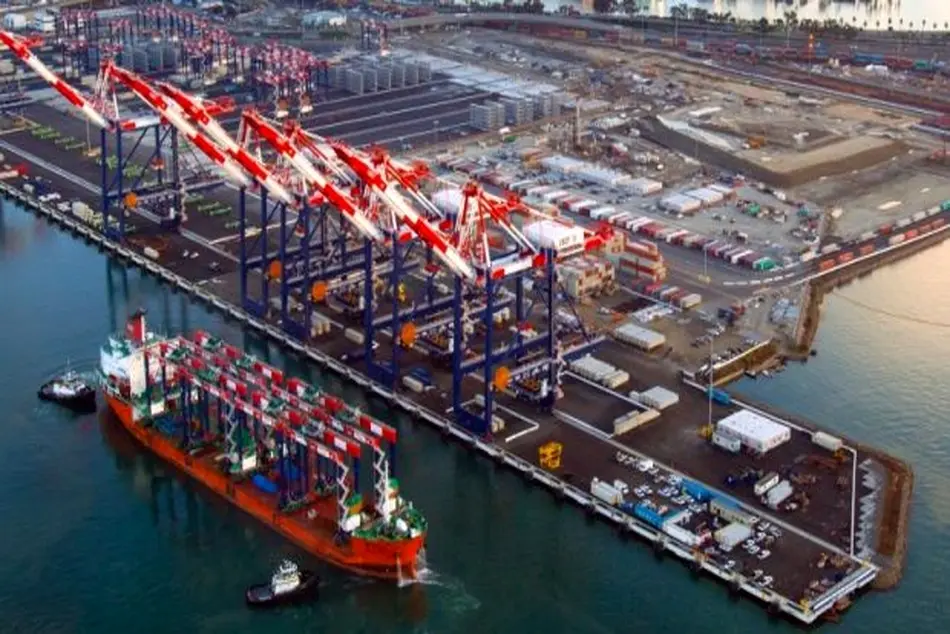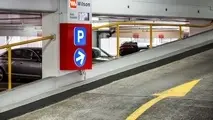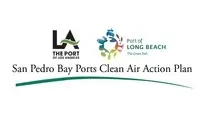San Pedro Bay ports call for zero-emissions technology

The ports of Los Angeles and Long Beach released the draft of their proposed 2017 Clean Air Action Plan (CAAP) Update. The document reveals near-term and long-term strategies for the nation’s busiest harbor complex, to further reduce air pollution from port activities, minimize GHG emissions, and ultimately achieve zero emissions for trucks and terminal equipment.
“These ports are going where no port has gone before,” said Port of Los Angeles Executive Director Gene Seroka. “Based on what we’ve already accomplished to promote healthy, robust trade through our gateway, we’re ready to make history again, looking at a new array of technologies and strategies to further lower port-related emissions in the decades ahead.”
The draft 2017 CAAP, incorporating feedback from nearly two years of extensive dialogue with industry, environmental groups, regulatory agencies and neighboring communities, ushers in a new era of clean air strategies that seek to address the enormous challenges of reducing harmful emissions from port-related sources: ships, trucks, cargo handling equipment, locomotives and harbor craft.
The 2017 CAAP sets new clean air goals focused on reducing greenhouse gas emissions 40 percent below 1990 levels by 2030 and 80 percent below 1990 levels by 2050. The plan carries over previous 2023 targets for cutting other primary pollutants aimed at reducing diesel particulate matter (DPM) 77 percent, sulfur oxides (SOx) 93 percent, and nitrogen oxides (NOx) 59 percent below 2005 levels.
The 2017 CAAP’s near-term and long-term strategies include:
-
Clean Vehicles, Equipment Technology and Fuels
-
Starting in 2018, phase in clean engine standards for new trucks entering the port drayage registries followed by a truck rate structure that encourages the use of near-zero and zero emissions trucks, with the goal of transitioning to a zero emissions drayage fleet by 2035.
-
Reduce idling and support the state’s efforts to transition terminal equipment to zero emissions by 2030.
-
Update the Vessel Speed Reduction Program, expand the use of state-approved alternative technologies to reduce at-berth emissions, and encourage clean technology upgrades on ships to attract the cleanest vessels to the San Pedro Bay ports.
-
Freight Infrastructure Investment and Planning
-
Expand use of on-dock rail, with the long-term goal of moving 50 percent of all inbound cargo leaving the ports by rail.
-
Develop charging standards for electric cargo handling equipment.
-
Freight Efficiency
-
Develop a universal truck appointment system for the entire complex with the goal of minimizing truck turn times.
-
Create a voluntary Green Terminal Program to recognize terminal operators achieving high levels of freight movement efficiency.
-
Continue to explore short-haul rail, staging yards, intelligent transportation systems and other supply chain efficiency improvements.
-
Energy Resource Planning
-
Develop infrastructure plans to support terminal equipment electrification, alternative fuels and other energy resource goals.
-
Continue to develop and implement viable energy conservation, resiliency and management strategies.
The most recent emissions inventories show the ports have already surpassed the 2023 DPM and SOx reduction targets and are within striking range of the NOx target. The 2017 CAAP identifies the tougher measures needed to ratchet down harmful emissions to zero or near-zero levels.



